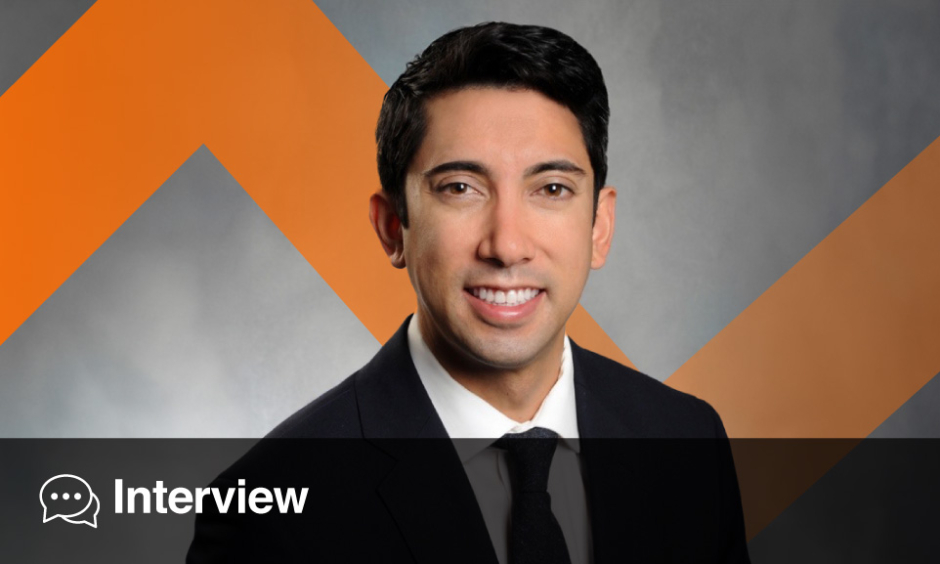Timothy Clinton | Urologic Oncologist and Associate Surgeon, Dana–Farber Cancer Institute and Brigham and Women’s Hospitals, Boston, Massachusetts, USA; Faculty Member, Harvard University, Boston, USA.
Citation: EMJ Urol. 2023; DOI/10.33590/emjurol/10305414. https://doi.org/10.33590/emjurol/10305414.
![]()
What has driven you to specialise in urologic oncology, in particular the management of advanced testicular and bladder malignancies?
My interest in urology started in medical school at the University of Texas Health Science Center in San Antonio, USA. During that time, I learned so much about urology, but really found the surgical management of bladder cancer (radical cystectomy) and testicular cancer (retroperitoneal lymph node dissection) to be the most interesting. While they are two very different disease processes with very different survival rates, what I have always found most interesting is the vital role that appropriate surgical management plays within each disease. While surgery is one aspect of urologic oncology, what I appreciate most is the multidisciplinary approach, and caring for these complex patients as a team.
You were recently acknowledged with an award for your contributions as a peer-reviewer for urology articles. Could you outline the areas you would like to read more research in in the near future?
As a reviewer, I truly enjoy this as a means of keeping up with the constant amount of urologic research that is coming out. My personal interests match my clinical and research interests, mainly around translational research and clinical trials for bladder and testicular cancer. Whilst translational genomics research has long been centered around DNA and RNA sequencing, I am currently exploring more epigenetic changes and markers, and the emerging field of fragmentomics for cell-free DNA (cfDNA).
Part of your research interests lie with defining the genomic determinants and biomarkers of urothelial carcinoma and germ cell tumours. Are there any recent notable advances you would like to share in this field?
Recently there have been many clinical advances and large-scale genomic sequencing efforts in the management of urothelial carcinoma, but unlike lung cancer, the ability for personalised precision oncology in bladder cancer has not yet been achieved. Largely, the lack of adequate biomarkers continues to be a major deficit in achieving personalised treatment for these patients. From emerging data on circulating tumour DNA (ctDNA), and my own work in cfDNA, we are starting to see evidence for more plasma-based biomarkers. New urine ctDNA assays are emerging, and may be even better for localised bladder cancer decision-making. In germ cell tumors, the groups that have helped to identify and now utilise microRNA-371a-3p as a biomarker in prospective multi-institutional trials have truly moved this field forward, which has not seen much development for many years. I believe that this is just the start of a more personalised medicine approach for our patients with testicular cancer, and I look forward to the arrival of other biomarkers in development.
You recently co-authored an article, ‘Genomic heterogeneity as a barrier to precision oncology in urothelial cancer’. What was the key message delivered here?
This was a project that truly took a massive effort, led by my former lab mentor David Solit, with the help of many collaborators, including co-author Jessica Chen. Utilising the large-scale sequencing effort from Memorial Sloan Kettering Cancer Centre, New York, USA, we sought to determine the degree of heterogeneity in bladder cancer by comparing mutational frequencies across grade and stage. This led to using whole exome sequencing to look at mutational concordance between primary and metastatic tumors within individual patients. This demonstrated, through phylogenic analysis, that bladder cancer is characterised by early branched evolution. Additionally, discordant ARID1A alterations were found only in the metastatic lesions, which suggests its role in metastatic progression. Further validation of our matched pair analysis in 119 primary/metastatic pairs demonstrated that primary and metastatic sites have 23% discordance in actionable genomic alterations. Finally, evaluation of plasma cfDNA, compared to tumour samples in 123 patients, found that 17% of targetable alterations were exclusive to cfDNA only, and 23% were exclusive to tumour samples. To summarise, in patients with progression we recommend not only metastatic biopsies, but utilisation of plasma cfDNA for identification of targetable alterations.
Having featured on a podcast recently discussing bacillus Calmette–Guérin (BCG) refractory non-muscle invasive bladder cancer, what were the key points from this session, and can we expect to see you contribute more research and discussion in this field soon?
It was a real pleasure to talk with experts Aditya Bagrodia and Eugene Pietzak about BCG-unresponsive non-muscle invasive bladder cancer. We were able to highlight the different options available for these patients, and the counselling that we incorporate with our patients in this difficult clinical scenario. My personal research in this area is looking to evaluate novel therapeutics as alternative treatment options. We know that certain alterations are associated with BCG unresponsive disease and thus, if we can target these alterations, this may be a viable alternative to cystectomy in many patients.
Robotic surgery has an increasing role in urology. How have you seen this change over the course of your career so far? Is there room for artificial intelligence (AI) in urologic oncology?
At this point, robotic minimally invasive surgery is a mainstay in the treatment of nearly every urologic cancer surgery. As a younger attending doctor, I have been trained by true experts in open and robotic surgery, and have come to appreciate the benefits and need for both approaches for the benefit of my own patients. As a surgeon most interested in bladder cancer and testicular cancer, the use of robotic surgery is emerging in both of these spaces.
I have found that in appropriately selected patients, the use of robotic cystectomy with intracorporeal diversion and robotic retroperitoneal lymph node dissection has truly been revolutionary in the recovery of such morbid operations. This truly provides a unique surgical approach for our cancer centre, and decreases pain, blood loss, and recovery. With that being said, there are plenty of patients where an open approach is still required, and additionally, robotic surgery does not negate a poor lymph node dissection or poor surgical excision. Thus, it is imperative for those of us performing such robotic surgeries to still uphold the same level of expertise as previously achieved in open surgery. The use of AI in urologic oncology will continue to grow, as we have seen already in pathology and radiology. It is only a matter of time until surgical approaches, and specifically robotic surgery, will start to include shades of AI.
What advice would you give a younger self, looking to establish themself as a clinician and researcher?
I would consider myself still a growing clinician and researcher, and at the start of my career. In general, when I counsel residents and medical students, I remind everyone that the patient remains our sole focus. There are no shortcuts in surgery, and it is imperative to understand not only the disease process and management, but the experience of seeing and learning, and ultimately mastering an operation. This learning never ends, and there are unique scenarios that will continue to challenge every clinician. As long as all of us starting our career remember thiss, I think we can all achieve success.
Since your appointment at Brigham and Women’s Hospital, what has been your proudest achievement? Is there anything this hospital approaches well that you think other organisations could learn from?
Brigham and Women’s Hospital and Dana–Farber Cancer Institute has a unique position as a premier cancer institute; thus, our greatest approach is the ability to provide complex and comprehensive multidisciplinary care to our patients. What I find most enjoyable is engaging not only my colleagues in urology, but those in medical and radiation oncology to determine the best treatment course. My proudest achievements have been the ability to bring new techniques to the treatment of our patients with bladder and testicular cancer.








